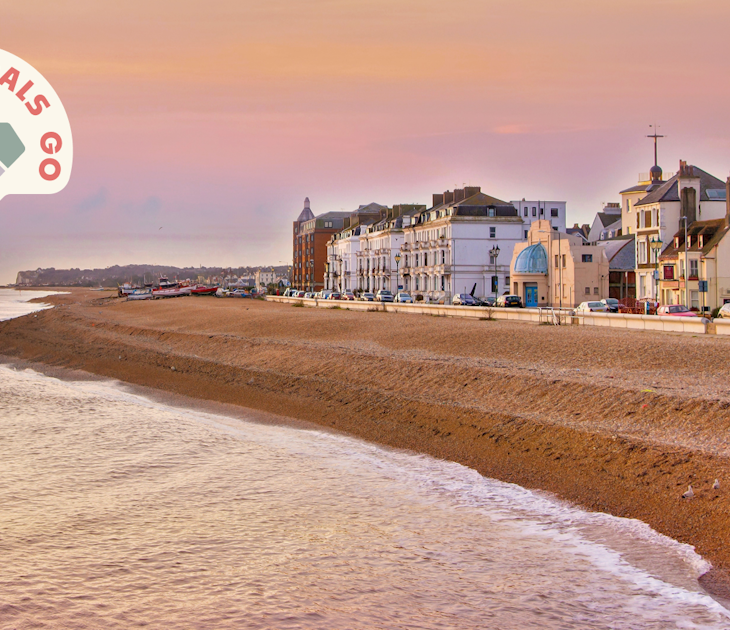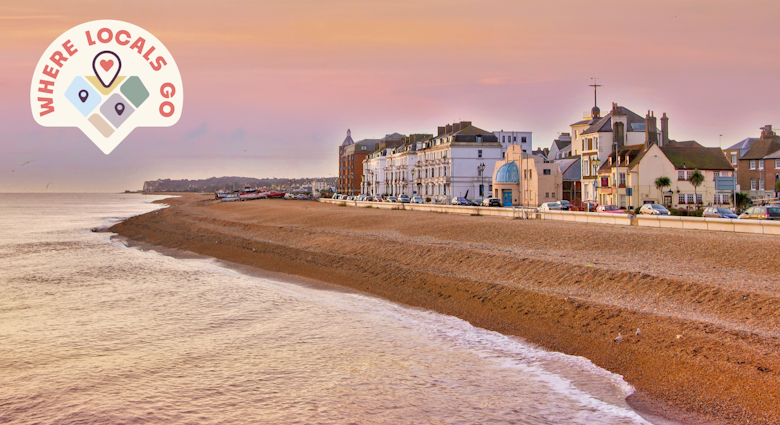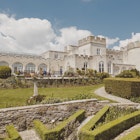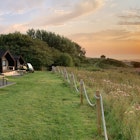Northeast England is elbows-deep in history – and nowhere is the region’s legacy more evident than in Durham.
One of Christianity’s most important saints is entombed at Durham Cathedral, making the city a pilgrimage destination for worshippers from across the globe. Yet Durham is also a thriving student town, with a cascade of cute cobbled streets that lead down to riverside bars in the shadow of a spectacular Norman castle. Come for the history – and stay for the haunted pubs, northern food and small-town vibes.
Here are all the best things to do in Durham, England.
Tour the castle with students
Durham Castle was built in 1072 after the Norman invasion, and in the 1800s it was taken over by Durham University and converted into student accommodation. This unique history makes it a fascinating place to tour and one of the best things to do in Durham today – especially with a student as your guide. Over 90 minutes, you’ll get to explore a subterranean chapel with an unusual mermaid relief, browse Civil War artifacts and hear how the university decides which student gets the room in the keep’s gatehouse each year. Originally constructed to protect the Normans from disgruntled Northumberland locals, the castle’s defensive position – surrounded by cliffs that drop into a fast-moving river – makes it a spectacular focal point for the modern city.

Look for Harry Potter in the Cathedral cloisters
One of the most popular tourist attractions in Durham is the arched cloisters of Durham Cathedral, which were used as a set for the first two Harry Potter films over 20 years ago. The cathedral’s Chapter House (which can only be glimpsed through a keyhole) served as the set for a classroom scene with Professor McGonagall, while some of the items from the cathedral’s museum collection became props in the films. Settle in for a coffee at the cafe on the western side of the cloisters and look out for fans dressed up in wizarding cloaks on the hunt for the perfect selfie.
Stroll Durham’s Riverwalk
Since Durham isn’t a particularly large city (population 50,000) and since the city center is surrounded on three sides by the River Wear, it’s easy to feel like you’re in the countryside along certain lengths of the waterfront. Strolling around the city center’s teardrop-shaped peninsula via the Riverwalk loop shows the city’s leafy side and is one of the best free things to do in town. The trail is ringed by mature trees and passes several of Durham’s college boathouses, where rowers can often be found practicing with their crews.

Climb the Cathedral tower
There are 325 steps up to the top of Durham Cathedral’s central tower, wound like a tightly coiled spring around a series of dizzying spiral staircases. The climb is not for the faint-hearted, but the 360-degree views from the top are unique in Durham, showing the old city spread out like a toy town. Although Durham Cathedral dates to the 1100s, the tower was rebuilt around the beginning of the 16th century, after significant damage from successive lightning strikes. Some of the most interesting views from atop the tower’s parapet are close-in ones, showing the cathedral’s skeletal footprint surrounding the base of the viewing platform.
Go in search of St Cuthbert
No one was more revered in the Anglo-Saxon kingdom of Northumbria than Cuthbert, the 7th-century saint credited with spreading Christianity across the north of England. One of the most important religious figures in the UK, he lived and died in the region after holding the position of prior at Lindesfarne’s island monastery.
His body is interred at Durham Cathedral, making it one of England’s most sacred pilgrimage sites. Pay your respects at his hushed shrine behind the High Altar, before visiting the museum’s subterranean St Cuthbert exhibition, which includes remnants of the coffin in which he was laid to rest in 698 CE, as well as the gold-and-garnet pectoral cross he was entombed with.
Get arty at Fowlers Yard
Hidden beneath Milburngate Bridge beside the River Wear, Fowlers Yard is a well-preserved cobbled street now being redeveloped as Durham’s arts quarter. You’ll find the City Theatre here, along with Leonard’s Coffee House (come for brunch) – but the real draw are the nine creative workspaces that occupy the old stables and warehouses. Tapestry weaving, wool spinning, jewelry design, print making and hand embroidery are among the arts on display. If you’re lucky, you might catch the artists and artisans at work as you browse the workshops.
Take tea with seniors at Durham Indoor Market
Like a good rummage? Then don’t miss Durham’s old-fashioned covered market, where 60 independent traders hawk everything from secondhand books and music to Moroccan lanterns and speciality teas. The market hall was built in 1851, though since today its original Victorian features are mostly gone what remains feels more like a secret bazaar. Don’t miss the mezzanine Cafe Cenno, where local pensioners congregate in the rafters to people-watch with a cuppa above the patchwork of stalls.
Follow the vennels to find hyper-local food
Old Durham is full of tiny alleyways and side passages called “vennels” – a word only found in parts of Scotland and the Northeast. Today, these tiny back streets offer a fascinating behind-the-scenes view of the city center and also lead to some of Durham’s most atmospheric places to eat. One local institution is the Vennels Cafe, which takes its name from the narrow passage you need to find to reach its lovely outdoor courtyard terrace.
According to local lore, it was here in 1720 that one Mrs Clements developed the recipe for the first English mustard. Two centuries later, locals and tourists alike flock here for delicious scones and giant wedges of homemade quiche. For something more upmarket with an equally historic atmosphere, try Cellar Door, an alleyway restaurant inside a 13th-century cellar conversion with a secret outdoor riverside terrace. The restaurant specializes in modern British food, sourced wherever possible from a within 1-mile radius or foraged from nearby woods.
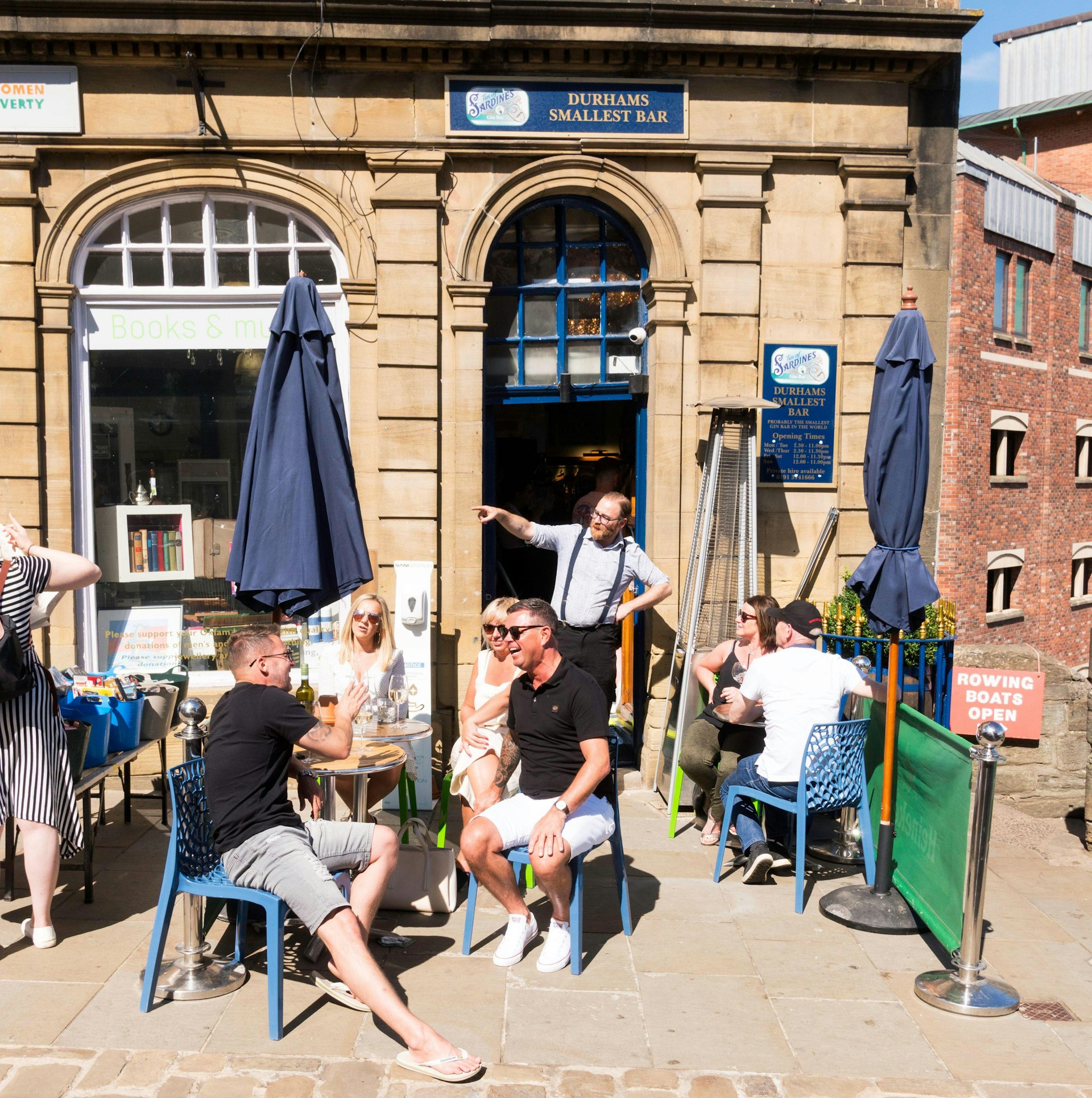
Sample gins at one of the smallest bars around
What was once a hog-roast takeout joint and before that a juice bar has now been kitted out as Durham’s smallest drinking den. The Tin of Sardines clings to the edge of Durham’s 12th-century Elvet Bridge. Outdoor terrace seating pops up on bright days, though it’s most fun inside, where you can watch drinkers getting cozy by riverside windows over balloon glasses filled with global gins, and the barman climbing the ladder to reach dozens of bottles on shelves that stretch to the ceiling.
The Tin of Sardines’ sister venue, Old Tom’s Gin Bar is an equally interesting spot along the river, with more than 250 gins squeezed into a wood-beamed house notable for its over-the-top decor (think Victorian wallpaper, leather upholstery and a clown swinging from a trapeze above).
Admire the specimens at Durham’s Botanic Garden
Dating back to the 1920s, Durham’s Botanic Garden was originally established by the university as an experimental garden on the grounds of the science laboratories. Fast-forward almost 100 years and the gardens are still owned by Durham University and used to support teaching and research (though they’ve moved to a bigger site on the southern edge of the city). Over 10 hectares (25 acres), you can wander through mature woodlands where bluebells flower in spring, a Carboniferous Garden established by earth-science students to tell the history of coal in County Durham, and also several outdoor sculptures dotted among the grounds.

